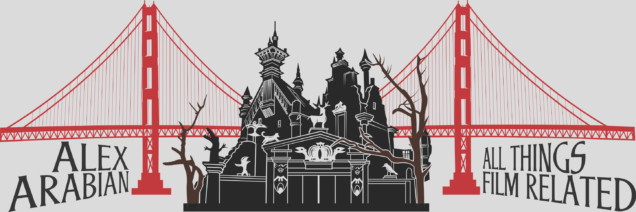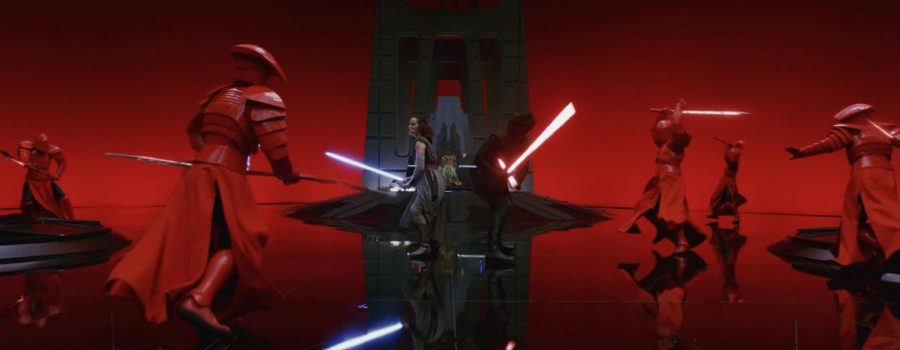Both Star Wars: Episode VIII – The Last Jedi and Star Wars: Episode IX – The Rise of Skywalker are polarizing films. Although The Last Jedi received high critical praise, the film was a departure from the, more or less, rebooted original Star Wars in 1977 that was J.J. Abrams’ Star Wars: Episode VII – The Force Awakens (an outstanding, albeit familiar film). The unexplored access most noticeable throughout Rian Johnson’s The Last Jedi is the auteur’s considerably metaphysical approach to The Force.
Consider The Rise of Skywalker a very pointed effort by Lucasfilm to attempt to retcon a portion of “less popular” aspects of The Last Jedi (Kelly Marie Tran as Rose Tico), reintroducing Emperor Palpatine into the franchise in order to navigate worn franchise tropes. This is a kinder way of saying that the Disney corporation caved in to a small portion of basement-dwelling man children in desperate need of a sun tan – the people who decided it was a constructive use of their time to go on social media and hurl endless racial epithets toward Marie Tran and John Boyega, eventually forcing Marie Tran off of social media; the “fans” that sent death threats to Johnson for “ruining their childhoods;” the “fans” who boycotted the film in the form of a flurry of embellishing, puerile paragraphs in user comments section (which many potential viewers consider “reviews”) on Rotten Tomatoes so as to disproportionately lower the audience score compared to the high critics’ score; the “fans” who had the privilege of seeing an original Star Wars film in their generation, only to react by creating a petition in order to force Lucasfilm to remake it and revoke Johnson’s The Last Jedi as canon. As a result of the sudden crumbling to most of this tiny, angered group of the fanbase, the two films exhibit entirely different perspectives on The Force. Whereas Johnson deconstructed the dated, binary confines of The Force in The Last Jedi, J.J. Abrams ensures that The Force remains a watered-down allegory for the duality of humankind in The Rise of Skywalker.
Before The Last Jedi, previous Star Wars films explored the light and dark sides of The Force’s relationship with religion, government, and personal gain. However, Johnson delves into the idea of a harmonious, simultaneous light and dark side of The Force in The Last Jedi, separate from political motivation, analyzing more of the abstract and mythological aspects of the mysterious power. J.J. Abrams, crafting a wonderful visual spectacle, albeit Frankenstein’s monster of a film with The Rise of Skywalker, sidestepped Johnson’s narrative exploration of The Force and returned to the same humanistic, structures-of-power-approach Star Wars films have always touched upon.
The Sith, as long as we, as audience members, have seen them on screen and learned in the Star Wars mythology through various other mediums, have been associated with authoritarianism. The Galactic Empire marked the fall of democracy, with Palpatine using Darth Vader and the Sith “religion” as the face of it. Similarly, Star Wars history tells us that the Galactic/Old Republic ruled peacefully with the Jedi as the face and protectors of their democracy (democratic constitutional republic) for over 25,000 years until the Sith supposedly, suddenly reappeared.
The New Republic (the resistance), led by the Jedi (as we learn in a narrative rush in The Rise of Skywalker) and Jedi-in-training Leia Organa and Rey, respectively, is a new iteration of the Old Republic, safeguarded by the light side of The Force. Similarly, the First Order is a reincarnation of the Galactic Empire, with Snoke and Kylo Ren’s Sith abilities at a tricky juxtaposition of political power and the pursuance of otherworldly, “supernatural” gain – ultimately, the power to control anything and everything, even the fate of one’s own mortality. Sound familiar? The Rise of Skywalker does its best to “right” Johnson’s The Last Jedi ship and echo the story structure of each trilogy before it, littering the film with fan service for the angered people’s demands to imbue more nostalgia into these new projects (we now have almost every character from The Clone Wars brought to live action, Boba Fett alive, and an incredibly unrealistic scene with Luke Skywalker obtaining one of Yoda’s species – there is very little new material).
The Rise of Skywalker has Palpatine fighting his own granddaughter, who identifies as a Skywalker, and who also has a forced romantic connection with her likely-first cousin, once-removed, Kylo Ren, all while a Lando Calrissian character arc is rushed in between Abrams’ good friend, Dominic Monaghan’s (Lost) stolen dialogue from Marie Tran (literally, Abrams agreed to give Monaghan her lines over a soccer bet). Rey as a Palpatine undoes Johnson’s important point that any average person can be a Jedi, unrelated to nepotism. Further, despite what Lucasfilm president Kathleen Kennedy insists, Rey’s parentage was in a constant state of oscillation throughout the making of the sequel trilogy. It wasn’t until Episode IX‘s pre-production that Abrams pitched Palpatine, Rey admitted in an interview with Jimmy Kimmel.
Conversely, Johnson knew exactly what he wanted to make with The Last Jedi. He offers an alternative direction in the Star Wars universe for The Force, not tied to government power. With Luke Skywalker refusing to train Rey, he is breaking the cycle of leveraging religious influence for political gain (something governments do all too often in real life). He realizes that she only wants to engage in an age-old war that he knows has been fought the wrong way for millennia. Kylo Ren suggests that the light and dark sides could exist, separate from the confining structures of power, economic limitations, meaningless political wars, etc. Force-sensitive beings this powerful and honed aren’t human, so-to-speak, after all. Not like us humans. It seems the only quarrel they’ve ever had is with each other, not with any form of government and its people. When governments are involved, the Sith and Jedi only further leverage the material gain of political power against the opposite side of the religion. When Kylo Ren kills Snoke, for a moment, Rey ponders this alternative.
Consider the Sith and the Jedi two sides of the same coin. They both belong to the same religion. In the Star Wars universe, let us minimize the galaxy far, far away during a long time ago to Ireland in the 1970s during The Troubles wars. There are Catholics and Protestants fighting each other, tied to political movements, fueled by their minor religious differences. One side thinks the other is “bad,” or “lesser,” for being the religion they are, believing what they do, and vice-versa. Johnson asks, “What if we eliminate the political roadblocks and throw the two polarizing faces of this echo of christianity together?” We realize that, although the Sith and Jedi may think that they’re on the other ends of the spectrum of The Force, they’re far more similar than they are dissimilar.
Once the puppeteers (Palpatine, Snoke, Yoda, etc.) are removed, and the Sith and Jedi step out of the role of puppets and into those of decisive, autonomous people, they can explore the deeper knowledge of The Force that both the Sith and Jedi have always yearned and competed for…together, discovering what their masters have always withheld or refused to learn out of fear or inability. The answer has always been to join forces. Puns aside, Abrams scaled that exploration back and brought the Empire/Republic parallel into the forefront of Star Wars lore again, chaining down the story with the same political motivations and alignments that have seemed to be synonymous with The Force for thousands of years.
Johnson was trying to allude to the fact that there can be a third way, separate from “light” and “dark.” Something else in the force when you combine the knowledge of a Sith and a Jedi. Perhaps these individuals aren’t supposed to be involved in politics. Perhaps Kylo Ren was too far disturbed to finish what he started with Snoke and attempt a team-up with Rey. Perhaps Rey and Kylo Ren’s generation wasn’t ready yet, mentally, for the unification of the light and dark sides. Some battle wounds are still fresh. Perhaps there could have been a third form of benevolent “government” proposed by this new Sith/Jedi entity, one that doesn’t leave its people in the far-reaching ends of the galaxy in such starkly-contrasted poverty. Alas, that wouldn’t align with the notion that Force-sensitive individuals should avoid political involvement, given their history. They’re more akin to deities than human beings, after all.
We may never know for sure where Johnson’s narrative allusions might have led, as Abrams’ inclusion of Palpatine in The Rise of Skywalker ensures that both sides fight each other for supremacy, incorporating a power dynamic among The Force that Johnson attempted to topple down and evade. Abrams only has Rey join forces with Ren after he denounces the dark side. Further, Ren dies immediately afterward. There’s no appropriate resolve to Johnson’s non-binary, metaphysical examination of The Force nor Rey and Ren’s relationship. Rey and Ren’s Force connection was always platonic. That last-minute romantic arc twist (again, another appeasement to the toxic fandom) further muddles the idea of the possibility of a true Dyad. One that Johnson spoke of through Ren in The Last Jedi. Instead of a Sith and Jedi placing their firepower down and their minds together in order to learn every mystery of The Force while also fending off other threats, we see two Jedis putting their lightsabers together in order to take down a Sith Lord. It’s the same, tired narrative, playing it safe.
Further, Rey seemingly absorbed Palpatine’s Life Force and every Sith’s before him by killing him, anyways, just as he wanted in the end. In a way, by a lack of understanding of his own story and a rejection of Johnson’s ideas, Abrams unwittingly married the light and dark sides, though only framed it as the light side winning again; Rey absorbs all of the Jedi instead of all of the Sith. Why not possess both the Sith’s and the Jedi’s powers and knowledge? She’s a good person, as is underscored countless times throughout the franchise. She seems the perfect “vessel” to absorb these ancient ways without being corrupted in either direction.
Apart from physical remnants of a time long gone, history is only as accurate as our generational storytellers choose to make it. Were the Sith truly “evil” before Emperor Palpatine murdered his master, Darth Plagueis? Let us consider Plagueis, as of yet, a neutral canonical character, as James Luceno’s Legends novel, “Star Wars: Darth Plagueis,” isn’t considered canon post-Disney buyout. As such, in the Star Wars cinematic universe, Plagueis didn’t infiltrate the Galactic Empire to ensure the supremacy of the dark side. He was known as Plagueis the Wise, a seemingly benevolent title. It is also worth nothing that history can be altered to make one side look worse if the other side is writing said history. The Sith could’ve simply been spiritual enemies with the Jedi until Palpatine fought back, politically, in a severe, authoritarian sense, after thousands of years of Jedi rule. Perhaps the Jedi had leveraged their political power to keep the Sith at bay for those thousands of years, with the Old Republic as their institutional justification. Both sides simply want dominance. In The Last Jedi, Johnson wants to make the point that no one side is truly good or bad, right or wrong, when perspective and external influence are taken into account.
Will the New Republic be any different from the Old, with a new iteration of the Jedi, Rey, as its godlike protector? Will there be a further marriage of the light and dark sides of The Force, or will the Sith’s knowledge go extinct with the deaths of Palpatine and Ren? Will the Jedi simply continue to blindly oppress any “disturbance in The Force” that could be interpreted as a new power or life energy materializing as a potential ally and not an enemy? Will Rey and any new Force-sensitive beings learn to avoid politics altogether, as Luke wished so sincerely? Will the philosophical aspect of a Force Dyad be explored more thoroughly in future films or television series? One can “only hope.”
With the singularly quirky, aesthetically daring, and visionary filmmaker Taika Waititi being courted for a future Star Wars film, it would have seemed Lucasfilm was finally be done playing it safe after The Rise of Skywalker’s underwhelming critical and financial performance at the box office, but The Mandalorian, as slick as it is, proved that notion wrong. Alas, every Star Wars film can’t build entirely upon the foundation of those that came before it in a sensical fashion, particularly with the way in which Disney tends to cycle and recycle its writers and directors. However, The Rise of Skywalker does leave enough open to interpretation, narratively, in the end, for another filmmaker to steer things back toward the metaphysical direction in which Johnson took the franchise in The Last Jedi easily enough. It will be fascinating to see what Waititi does with his standalone Star Wars film.








Leave a Reply
Your email is safe with us.